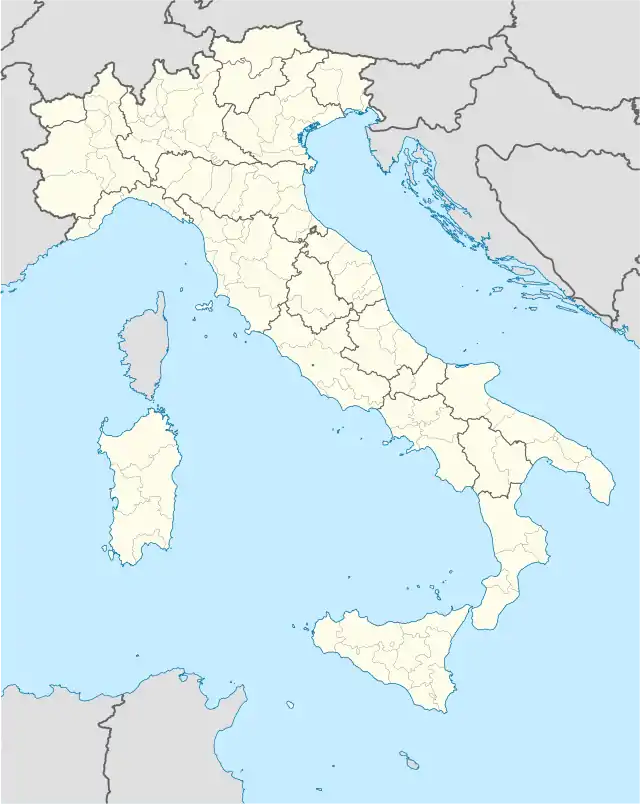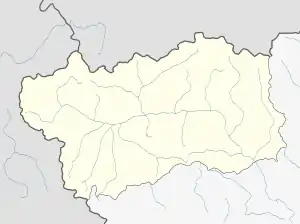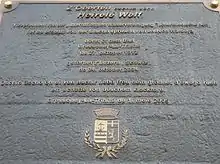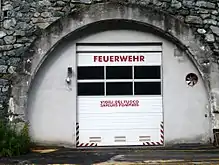Gressoney-La-Trinité
Gressoney-La-Trinité (Gressoney Walser: Greschòney Drifaltigkeit or Creschnau Drifaltigkeit; Francoprovençal: Gressonèy-La-Trinità) is a town and comune in the Val de Gressoney, part of the Aosta Valley region of northwestern Italy.
Gressoney-La-Trinité
| |
|---|---|
| Comune di Gressoney-La-Trinité Commune de Gressoney-La-Trinité Gemeinde Gressoney-La-Trinité | |
 Centre of the town | |
.svg.png.webp) Coat of arms | |
Location of Gressoney-La-Trinité 
| |
 Gressoney-La-Trinité Location of Gressoney-La-Trinité in Italy  Gressoney-La-Trinité Gressoney-La-Trinité (Aosta Valley) | |
| Coordinates: 45°50′N 7°50′E | |
| Country | Italy |
| Region | Aosta Valley |
| Province | none |
| Area | |
| • Total | 65 km2 (25 sq mi) |
| Elevation | 1,635 m (5,364 ft) |
| Population (31 December 2006)[2] | |
| • Total | 304 |
| • Density | 4.7/km2 (12/sq mi) |
| Demonym(s) | Gressonards |
| Time zone | UTC+1 (CET) |
| • Summer (DST) | UTC+2 (CEST) |
| Postal code | 11020 |
| Dialing code | 0125 |
| Website | Official website |
Geography
At an elevation of 1,635 metres (5,364 ft) above sea level, Gressoney-La-Trinité is the highest village in the Val de Gressoney, the valley of the small river Lys which is fed by the Lys glacier.
History


The area was settled by the Walser people from the Valais who left behind characteristic "Walser houses", or Stadel, buildings made of wood and stone sitting on short mushroom-shaped pillars. Historically Gressoney-Saint-Jean and Gressoney-La-Trinité have been two separate comunes.
From 1928 until 1946, the two were united into one commune, officially named Gressoney, which from 1939 onward was Italianized as Gressonei. After WWII, the two former communes were reconstituted.
Walser culture and language
Gressoney-La-Trinité and Gressoney-Saint-Jean form a Walser German cultural unity known as Greschòney or Kreschnau in Greschoneytitsch (or simply Titsch), the local Walser German dialect, or Kressenau in German, still spoken as of 2011.[3]
An example of Greschòneytitsch:
| Walser German | German | English |
|---|---|---|
|
Endsche Attò |
Vater unser |
Our Father |
References
- "Superficie di Comuni Province e Regioni italiane al 9 ottobre 2011". Istat. Retrieved 16 March 2019.
- "Popolazione Residente al 1° Gennaio 2018". Istat. Retrieved 16 March 2019.
- Flurnamen ein weisser Fleck. Letter by Rolf Marti, Gstaad, in: Die Alpen, June 2011, p.29
- "Das Vaterunser auf Walserisch (Greschòney)" (in Walser). Frankfurter Allgemeine Zeitung. 2006. Retrieved 2011-05-13.
External links
- www.gressoneyonline.it Official tourism information
- www.tourmonterosa.com Tour Monte Rosa - Matterhorn
